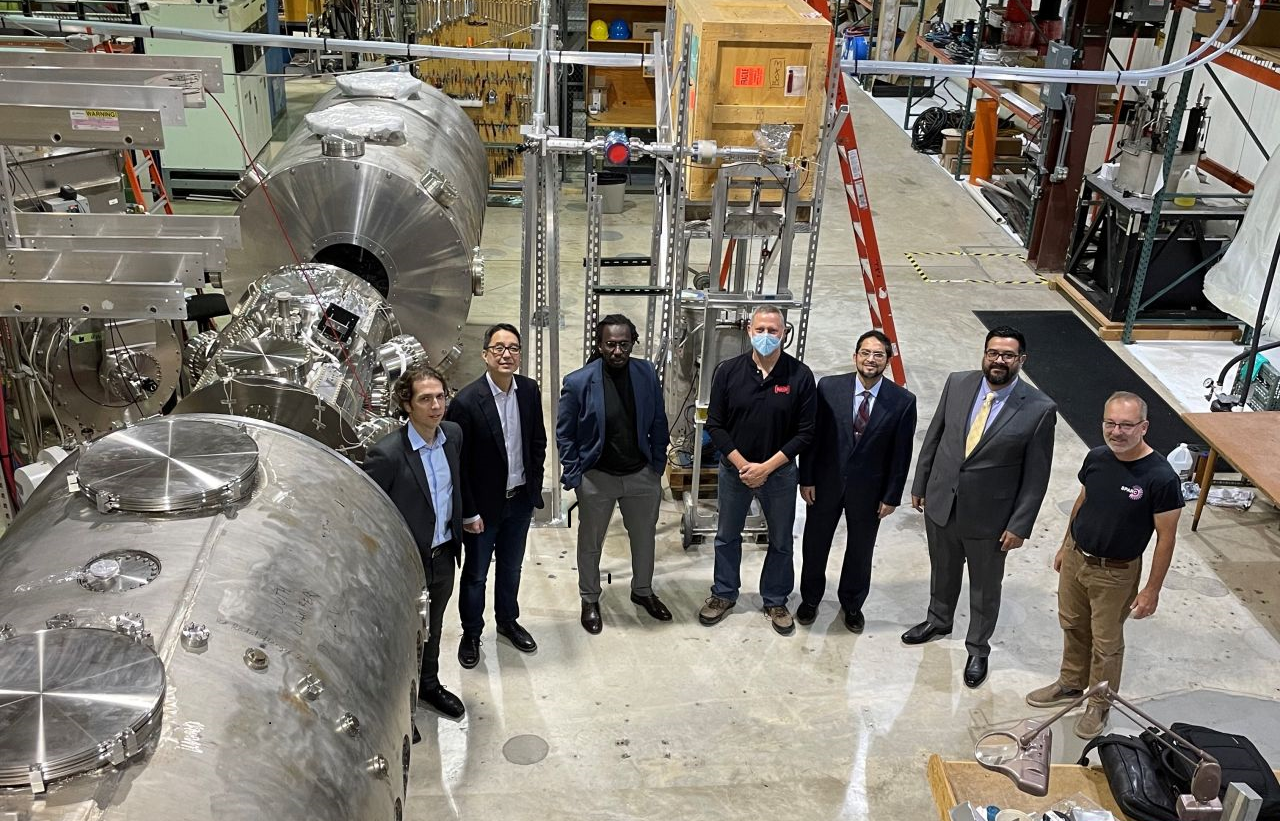Holy lazy journalism. That’s a picture of a completely different reactor.
Ha, yeah, you’re right. Looks to be a stock image of a tokomak render. The original report by Interesting Engineering has a photo of the actual device:

I need a banana for scale. I think it’s slightly taller than a story?
See the red and white dashed line? That’s the width of a 6 lane freeway.Edit: joke clearly unappreciated, here is a photo with people standing next to it: https://arpa-e.energy.gov/news-and-media/blog-posts/arpa-e-investor-update-vol-17-realta-fusion-magnetic-mirror

I appreciate your dad joke.
The Wisconsin HTS Axisymmetric Mirror research team was able to create and hold a plasma using a magnetic field strength of 17 Tesla through high-temperature superconductor magnets, as Interesting Engineering reported.
The magnet systems were delivered to the University of Wisconsin’s Physical Sciences Laboratory in Stoughton, Wisconsin, this year by Commonwealth Fusion Systems. The project operates as a public-private partnership with Realta Fusion, Inc., a UW-Madison spin-off company that contributes funding, according to the lab.
“It’s setting a world record in magnetic field strength for magnetically confined plasmas and is equipped with intense heating systems while still being a hands-on experiment for both graduate and undergraduate students,” Realta Fusion co-founder and UW-Madison scientist Jay Anderson said, per Interesting Engineering.
The design is based on an old fusion device called the magnetic mirror, which was a leading approach in the field until the 1980s, as the news outlet explained. This time, it’s been upgraded with the powerful HTS magnets, which trap energetic plasma in a “magnetic bottle” through advances in superconductor technology.
Glad to see fusion power slowly inching towards viability. Modern superconductors seem like they have a potential to accelerate progress in this field.
Especially now that we’ve managed to grow them on wires. That’s one of those big turning points that nobody tracked as it happened.
Can we make flexible, ductile, high-temperature super conductors now? Or have we settled for packing a flexible tube full of powder, Pixy Stix style?
Actual, flexible,
ductileribbons. It’s a new thing just in the last few years. The key turns out to be some kind of high-energy ion beam bombardment as the crystal is growing on the ordinary metal substrate.The pixy stix wires produced pretty crummy quality superconductor, AFAIK, besides just being harder to work with.
Edit: Actually, the HTS itself is still a ceramic, so probably not ductile. Flexible and tough, though.
Wikipedia doesn’t mention anything about that, got a link for further reading?
This is the article and subsection you’re looking for. IIRC you can buy like 50 feet rolls of it right now, at least on commercial scales, and the runs on the spool are gradually getting longer. An HTSC project is one of my tinkering ideas down the line, if I ever get to it, haha.
In this house we obey the laws of thermodynamics!


